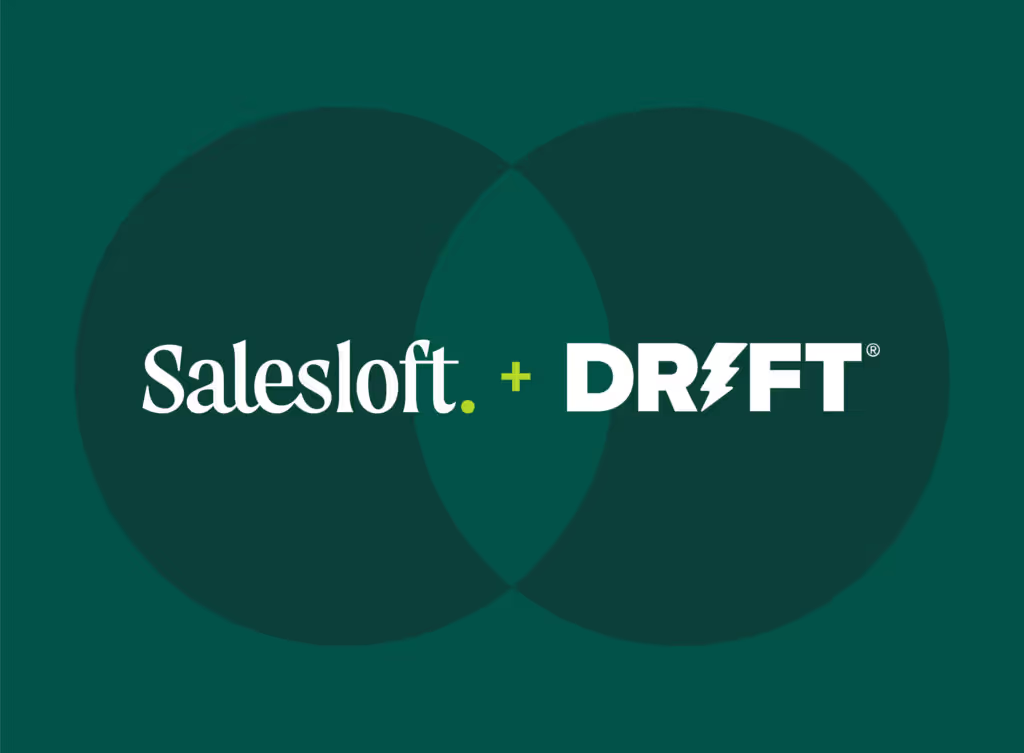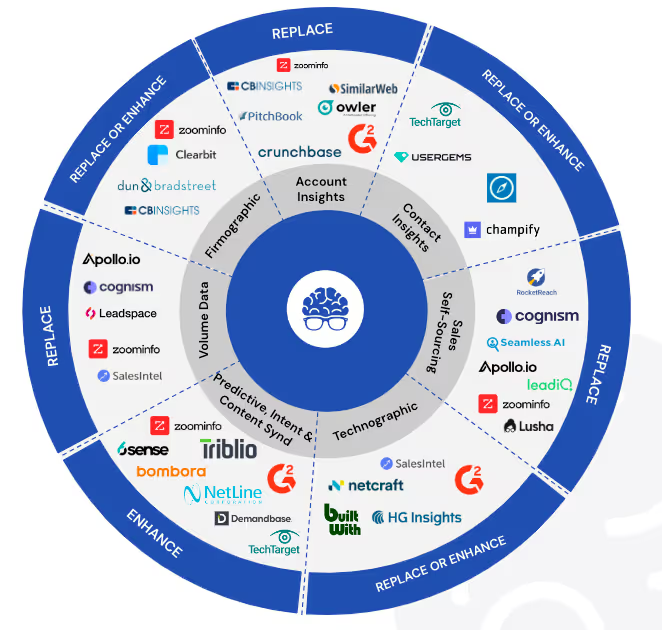The recent acquisition of Drift by Salesloft, under the aegis of Vista Equity Partners, is more than just another headline in the tech world. It's a harbinger of a seismic shift in the SalesTech and MarTech landscapes, signaling a consolidation trend that's set to redefine the industry. This move, alongside other notable acquisitions like HubSpot's purchase of Clearbit and Clari's acquisition of Groove, underscores a rapidly accelerating phenomenon: the melding of data and Go-To-Market (GTM) tools into integrated platforms.
A Closer Look at Salesloft and Drift
Vista Equity Partners, having acquired Salesloft and Drift at revenue multiples of 23x in 2022 and an estimated 17x in 2021 respectively, faced the harsh reality of a changing market landscape. With valuations plummeting, increased churn, and a highly competitive environment, the merger of Salesloft, a leader in Sales Engagement, and Drift, a pioneer in Conversational Intelligence, seems less a choice and more a necessity for survival.
The Competitive Landscape
Both Salesloft and Drift operate in highly commoditized segments, with over 160 competitors in each of their domains according to G2. This backdrop of fierce competition and diminishing product differentiation paints a picture of an environment where standalone survival becomes increasingly challenging.
The Strategic Play
The consolidation of Salesloft and Drift under Vista's umbrella is a strategic maneuver aimed at leveraging synergies, particularly around buyer-led growth, and cutting losses. This merger is indicative of a broader strategy to consolidate positions, streamline operations, and perhaps most crucially, to justify the lofty valuations at which these companies were acquired.
Implications for the SaaS Ecosystem
This trend of consolidation is not isolated. The SaaS ecosystem, particularly within SalesTech and MarTech, is witnessing an acceleration in the merging of data and GTM tools. This is a direct response to the commoditization of the market and the need for differentiated value propositions. However, it raises concerns about the future of innovation and competition within the sector. As larger entities absorb smaller, niche players, the diversity of tools and approaches may diminish, potentially stifling innovation.
A Wake-Up Call
The merger serves as a wake-up call for SaaS startups. The era of exuberant valuations and independent operation is giving way to a more pragmatic, consolidated market structure. Startups must now navigate this new reality, where strength may lie in strategic alliances and integrated solutions rather than in going it alone.
The Road Ahead
As we look to the future, it's clear that the consolidation wave is only just beginning. The Salesloft-Drift acquisition is a template for what's to come, as market forces and investor expectations drive a closer integration of SalesTech and MarTech platforms. For startups and established players alike, the key to success in this new era will be adaptability, strategic foresight, and a keen understanding of the evolving market dynamics.
In conclusion, while the Salesloft-Drift merger might signal challenging times ahead for SaaS startups, it also opens up opportunities for innovation through integration. As the lines between sales and marketing blur, the companies that can offer comprehensive, streamlined solutions stand to define the next frontier of the tech landscape. The key question now is not if more mergers will happen, but when, and how companies will navigate the consolidation tide to emerge stronger, more resilient, and more aligned with the needs of the modern customer.
FAQs
How will the Salesloft and Drift integration impact existing customers of both platforms?
The integration of Salesloft and Drift, under the strategic direction of Vista Equity Partners, represents a significant pivot in the SalesTech and MarTech landscapes, with wide-ranging implications for existing customers of both platforms. The immediate impact on these customers is poised to be multifaceted, affecting service offerings, pricing structures, and platform usability. This integration aims to create a seamless, more comprehensive suite of tools that enhances the efficiency and effectiveness of sales and marketing teams. Customers can expect enhanced features that leverage Drift's conversational intelligence with Salesloft's sales engagement prowess, potentially offering a more cohesive buyer journey and improved conversion rates. However, such integrations often come with changes in pricing structures as new value propositions emerge. While some customers may benefit from an enriched feature set without a significant price increase, others might find themselves navigating revised pricing models that reflect the combined platform's increased capabilities. Usability is another critical area of impact, with efforts likely focused on ensuring a smooth transition and minimal disruption to existing workflows, although there might be a learning curve as customers adapt to any new interfaces or functionalities.
What specific synergies between Salesloft and Drift are expected to drive buyer-led growth?
The synergies between Salesloft and Drift expected to drive buyer-led growth are rooted in the complementary nature of their technologies. Salesloft's platform excels in managing and automating sales engagements, while Drift's expertise lies in leveraging AI for conversational marketing and sales. The integration is anticipated to offer a more dynamic, responsive, and personalized engagement model across the sales funnel, directly aligning with the evolving expectations of modern buyers who favor self-directed, informed purchase journeys. These synergies could manifest in more efficient lead qualification processes, enhanced personalization at scale, and the ability to deliver timely, relevant content and interactions based on buyer behavior and preferences. By combining Salesloft's analytics and automation capabilities with Drift's AI-driven conversational insights, the merged entity could offer unprecedented visibility into the buyer's journey, enabling sales and marketing teams to more effectively nurture leads and close deals.
What does the trend of consolidation mean for innovation within the SalesTech and MarTech sectors?
Regarding the trend of consolidation and its implications for innovation within the SalesTech and MarTech sectors, the landscape is at a crossroads. While there is a valid concern that consolidation could lead to a more homogeneous market with fewer, larger players dominating the space, this trend also presents an opportunity for the emergence of more holistic and advanced solutions. The integration of complementary technologies, as seen with Salesloft and Drift, can catalyze the development of platforms that offer end-to-end solutions, addressing a broader spectrum of sales and marketing needs more effectively than standalone products. This consolidation can drive innovation by fostering the development of more sophisticated, integrated tools that provide deeper insights, more comprehensive analytics, and more streamlined workflows, potentially elevating the overall effectiveness of sales and marketing strategies. However, the key to sustaining innovation in a consolidating market lies in maintaining a competitive ecosystem that encourages continuous improvement and adaptation, ensuring that the drive to integrate and streamline does not stifle the diversity of ideas and approaches that fuel innovation in the first place.




